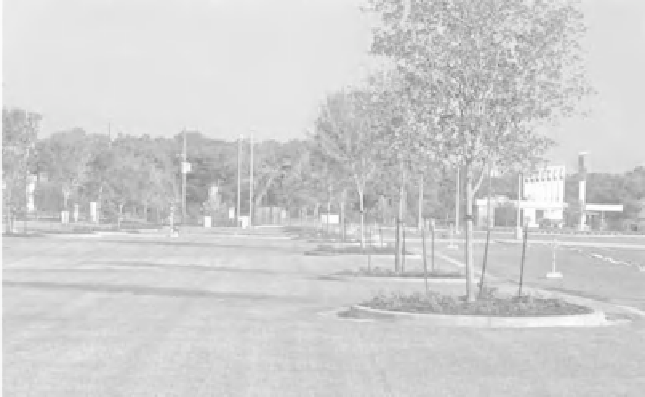Environmental Engineering Reference
In-Depth Information
As products are always being developed, the designer is encouraged to evaluate
the benefits of various products with respect to the specific application. Many
paver manufacturers recommend compaction of the soil and do not include a
drainage or storage area, and therefore they do not provide optimal stormwater
management benefits. A system with a compacted subgrade will not provide
significant infiltration.
Reinforced Turf
Reinforced turf consists of interlocking structural units that contain voids or areas
for turf grass growth and are suitable for traffic loads and parking (Figure 7-12).
Reinforced turf units may consist of concrete or plastic and are underlain by
a stone and/or sand drainage system for stormwater management. Reinforced
turf is excellent for applications such as fire-access roads, overflow parking,
and occasional-use parking (such as at religious facilities and athletic facilities).
Reinforced turf is also an excellent application to reduce the required standard
pavement width of paths and driveways that must occasionally provide for emer-
gency vehicle access.
Although both plastic and concrete units perform well for stormwater man-
agement and traffic needs, plastic units tend to provide better turf establishment
and longevity, largely because the plastic will not absorb water and diminish
soil moisture conditions. A number of products are available and the designer is
encouraged to evaluate and select a product suitable to the design in question.
A number of manufactured products are available, including (but not limited
to) Grasspave, Geoblock, Grassy Pave, Geoweb, and Netlon Turf Pavement
Systems.
Figure 7-12
Reinforced turf.












Search WWH ::

Custom Search